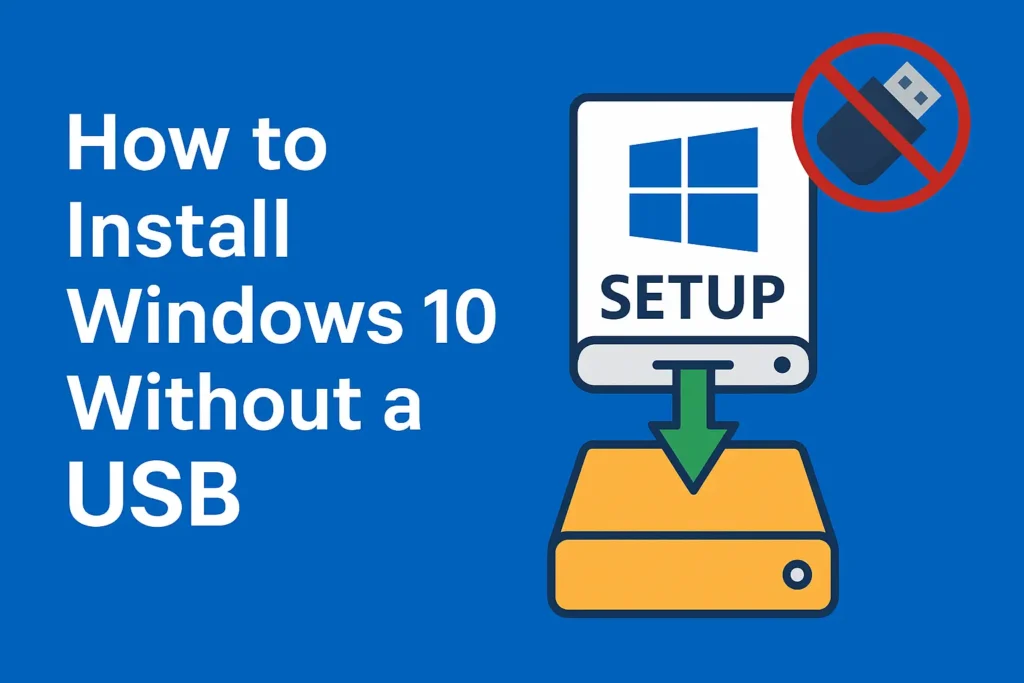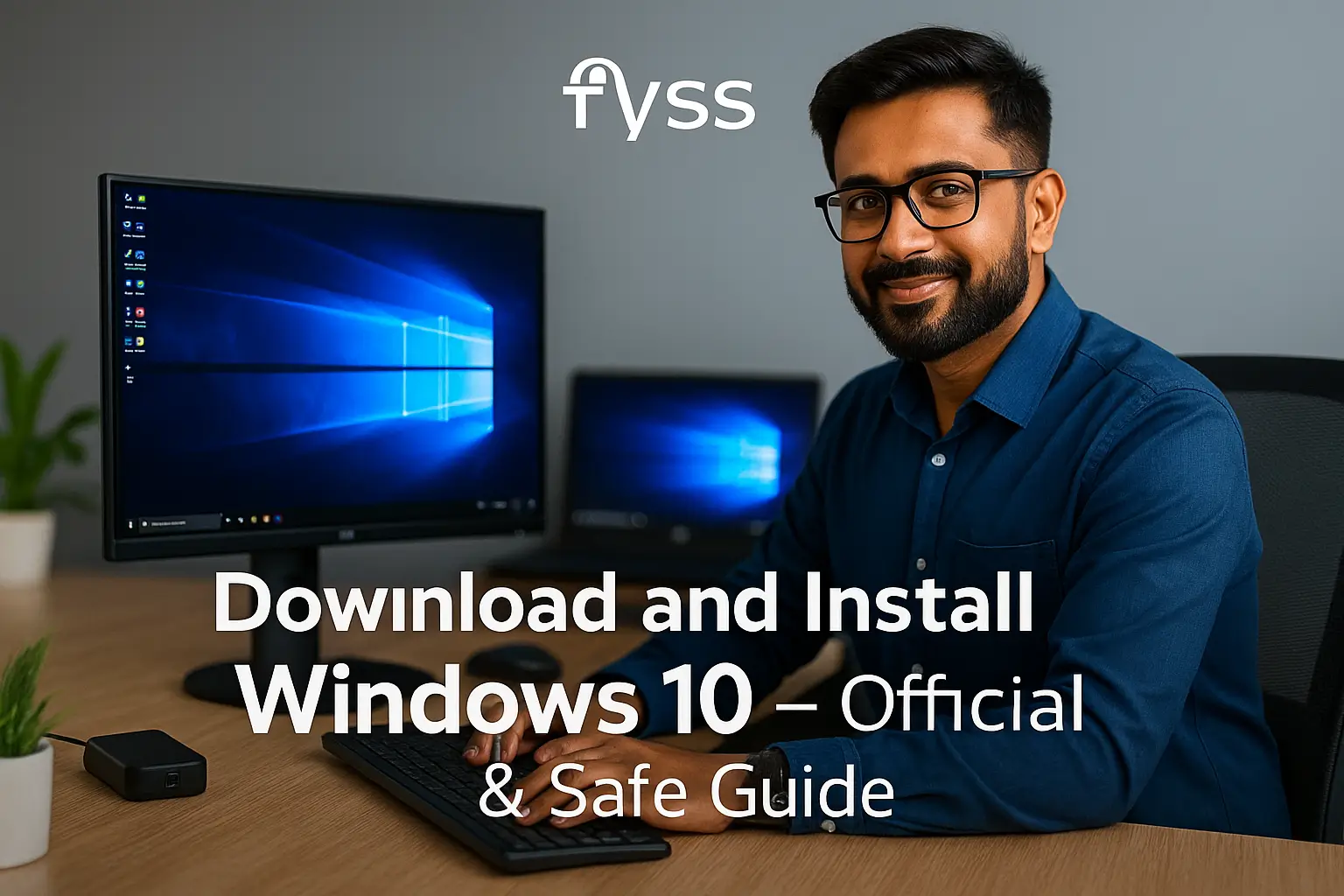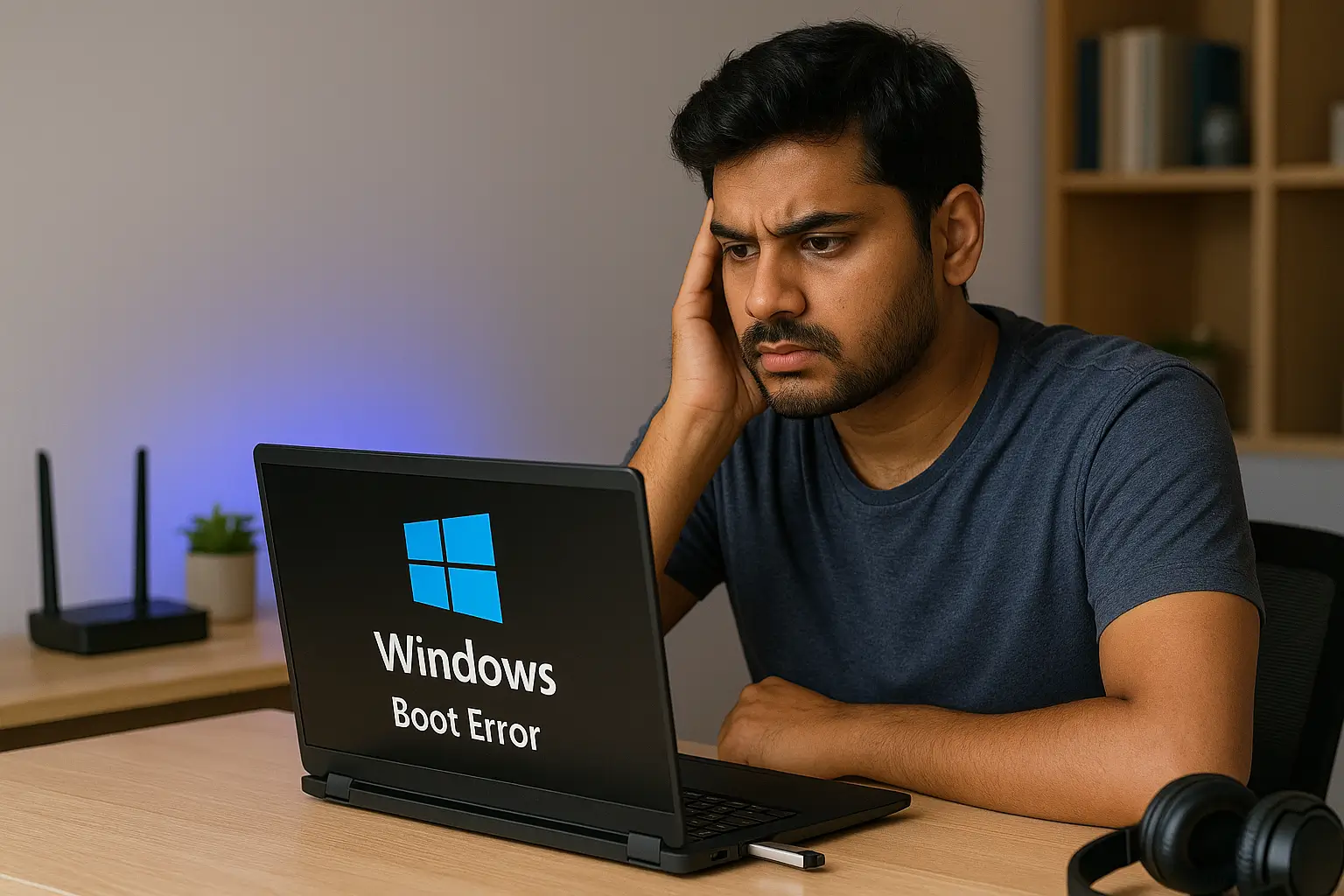Table of Contents:
Install Windows 10 Without USB – Step-by-Step Guide
There are times when you need to install Windows 10 but don’t have a USB drive. Maybe your USB ports are damaged or unavailable, or you simply lack the hardware. Fortunately, it’s absolutely possible to install Windows 10 without USB. This detailed guide walks you through several methods to do it safely and easily.
Why You Might Need to Install Windows 10 Without USB
There are several scenarios where you might prefer or be forced to install Windows 10 without a USB:
-
USB ports not working
-
No spare USB drive
-
Need to reinstall Windows remotely
-
Cleaner setup using ISO directly
Whatever your reason, this article will help you get it done.
System Requirements to Install Windows 10
Before you begin, check that your PC meets the basic system requirements to install Windows 10:
-
Processor: 1 GHz or faster
-
RAM: 1 GB (32-bit) or 2 GB (64-bit)
-
Storage: At least 16 GB (32-bit) or 20 GB (64-bit)
-
Graphics: DirectX 9 or later with WDDM 1.0 driver
Make sure your device has enough free space and a backup of your important data.
View the full system requirements on Microsoft’s Windows 10 specifications page.
Download Windows 10 ISO Without USB Tools
You will need a copy of the Windows 10 ISO file, which you can download legally from Microsoft’s official website. Ensure you pick the correct version (32-bit or 64-bit) based on your hardware.
Download the official Windows 10 ISO from Microsoft’s website.
Create a Partition to Install Windows 10
Since you won’t use a USB drive, create a dedicated partition to store the ISO and installation files.
Steps:
-
Open Disk Management (search it in the Start menu).
-
Right-click on an existing volume → select Shrink Volume.
-
Create a New Simple Volume from the unallocated space.
-
Format the partition as NTFS and assign a drive letter.
This new partition will be used in the next installation steps.
Learn more about Disk Management from Microsoft Docs.
Method 1: Install Windows 10 Using ISO Mount
This is the easiest method for most users.
Steps to Install Windows 10 Without USB:
-
Mount the ISO File:
Right-click the ISO file and choose Mount. A virtual DVD drive will be created. -
Copy Files:
Copy all the files from the mounted ISO to the newly created partition. -
Run Setup:
Go to the partition and runsetup.exe. Follow the installation instructions.
Method 2: Windows 10 Installation Without Pendrive via Network Share
If you have another PC in the same network, you can share the ISO.
Steps:
-
Share the ISO folder on a second PC.
-
On the target PC, map the shared folder as a network drive.
-
Mount the ISO from the network drive.
-
Run
setup.exeto start the Windows installation.
This works great in office or home LAN setups.
Method 3: Command Line Method to Install Windows 10
Advanced users can install Windows via command line tools.
Steps:
-
Open Command Prompt as Administrator.
-
Use DISKPART to format or create a new partition:
-
Use
NET USEif pulling files from a network location. -
Mount the ISO and run
setup.exe.
This method offers maximum flexibility but requires command-line knowledge.
After You Install Windows 10 Without USB
Once Windows 10 is installed, complete these steps to finalize setup.
Install Missing Drivers
-
Open Device Manager and check for missing drivers.
-
Download drivers from your hardware manufacturer’s site.
Run Windows Update
-
Go to Settings > Update & Security > Windows Update.
-
Click Check for updates and install everything available.
Reclaim the Installation Partition
-
Open Disk Management.
-
Delete the installation partition.
-
Extend your primary drive (usually C:) to use that space.
Visit your manufacturer’s driver support page for official downloads.
Conclusion
You don’t need a USB drive to install Windows 10. With a bit of prep—like downloading the ISO, creating a local partition, or sharing files over a network—you can perform a full Windows installation without bootable media.
Whether you use ISO mounting, network sharing, or command-line tools, this guide gives you everything you need to install Windows 10 without a USB. Be sure to check out our other Windows tips and tutorials on Fyss.in.




